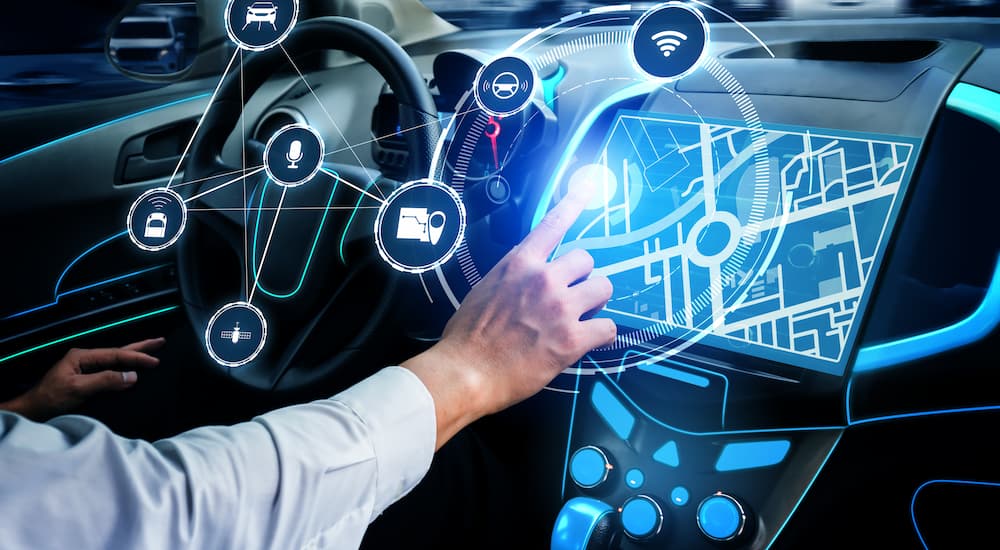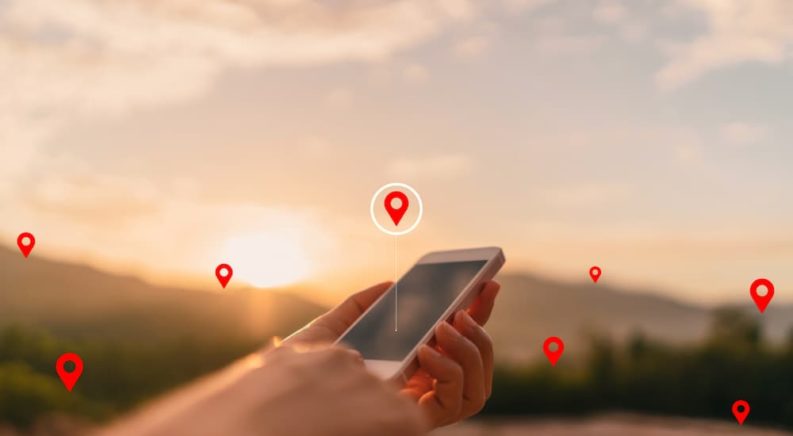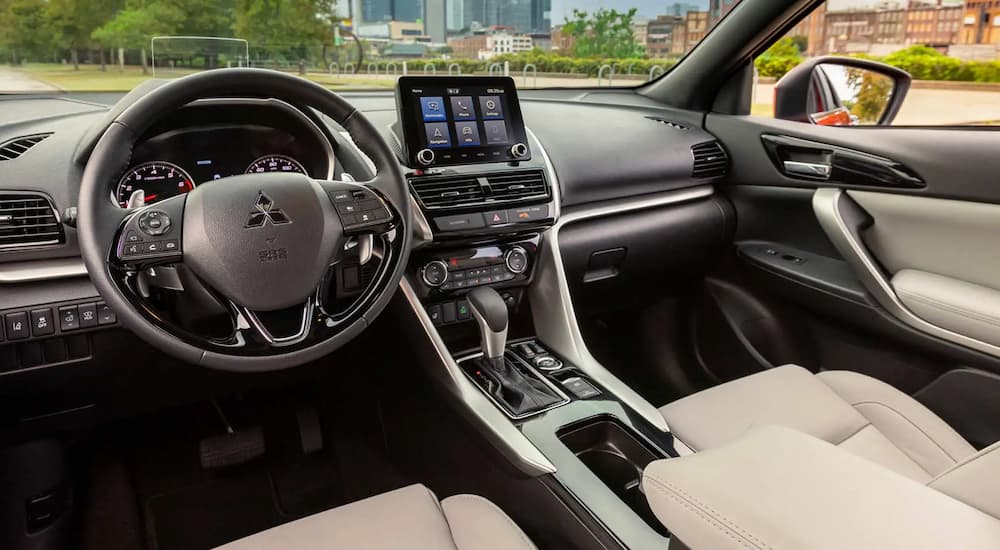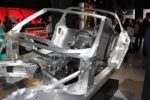Successfully navigating Canada’s confusing network of urban streets got a whole lot easier when Google Maps hit the scene. Just when we thought it couldn’t get easier or more convenient, car manufacturers introduced vehicles with connected services capable of displaying directions with real-time traffic updates. That meant no more getting stuck in rush hour traffic for hours on end.
That’s it, right? The best we can get, at least until someone perfects the flying car. As it turns out, navigation technology is still in phase one. Next up: what3words. If you haven’t heard of them, you will soon, especially if you’re planning to buy a new Eclipse Cross at your local Mitsubishi dealership. You see, it’s one of the first vehicles on the planet equipped with what3words location technology.
what3words has successfully mapped the world into 3 m by 3 m square grids and given each of them a unique 3-word name. Drivers can access the technology for free via the what3words app and enjoy an ad-free experience while they use it. It’s not a fad––multiple emergency services are using the technology to find lost hikers and deploy help faster and with more location accuracy.
Here’s what Canadian drivers can expect as what3words technology sits on the precipice of launching on infotainment touchscreens everywhere.

The Evolution of what3words
What3words is the brainchild of four seemingly unrelated London-based guys. First, there’s Chris Sheldrick, the event planner who got tired of relying on half-accurate directions to find party venues. His friend Jack Waley-Cohen is a real live linguist credited with coming up with the interesting three-word location combos. Mohan Ganesalingam, a co-founder with Sheldrick, holds an MA in Anglo-Saxon, Norse & Celtic languages. The final member of the team is an Economics major named Michael Dent. Together, this group has accomplished something truly revolutionary.
These four fellas put their minds to devising a better way to plot the world and hit pay dirt after a mathematician friend suggested a tiny three-meter by three-meter grid. By doing so, the system can vector in on a precise location without relying on man-made addresses or dated satellite imagery. Once mapped, the grid square is assigned a unique 3-word name by which it is forever known.
As a global company, a big hurdle was overcoming linguistic differences, such as translating English words into languages that might require more than three words to complete a literal translation. Instead, users can select from 50 languages, including English and French, and the assigned words are localized without losing regional nuance. Luxury automaker Mercedes-Benz saw promise and promptly purchased a 10 percent stake.
Last summer, Mitsubishi Canada announced its plans to utilize what3words navigation technology in the redesigned 2022 Eclipse Cross. The splashy press release headline promises buyers they can “navigate to any 3 m square in the world using just 3 words”, which is exactly what the what3words technology can accomplish. The system even works when there’s no available internet or data service.
The assigned words are random, sometimes funny, and often nonsensical, but they’re always memorable. Mitsubishi’s Canada HQ can be found by typing ///boom.manuals.trample into the Eclipse Cross’s navigation system. The “/// “also serves as the what3words company logo, and its founders are betting big that the three backslashes will be as recognizable as Apple’s, well, apple. However, the app isn’t commonplace yet, which limits its reach. Most tech insiders think this is a temporary problem.
Emergency Services Agencies Embrace what3words Technology
Among the earliest adopters of what3words technology were Canadian communication centres and emergency services agencies serving the Ontario Parks and the Manitoba Forestry. Individual users can tap into the technology via the free app, which is what ride-share drivers and delivery companies have already been doing.
The news is full of stories about rescues credited to what3words location technology. Users seeking help need only tap the Locate Me button in the app to reveal the three-word address for their exact location. From there, a quick call to Canadian emergency services to convey the three-word sequence starts the process of getting help. It’s remarkably simple, although some would say a database of 57 trillion grids is anything but simple.
A single Canadian control centre recently told Blue Line that it had successfully used the technology during over 100 incidents. Good samaritans use it to report forest fires and pets trapped in hot vehicles, and though it isn’t a substitute for good sense while recreating in remote spots, what3words certainly increases the odds of finding distressed folks a lot faster.
The what3words team estimates that nearly 90 percent of all UK police, fire, and ambulance services now use the technology. It’s not quite as widespread in Canada, but in more populous areas like Ontario, there’s already common usage. Next up is the integration of what3words navigation infrastructure in passenger cars on a global scale.
Why what3words Is Ingenious for Canadian Drivers
Did you know there are over 2,000 Second Streets in Canada? Many drivers know it all too well, frequently plugging in an address and ending up nowhere near their intended destination. If you’re heading to the mall and want to park near your favourite store, Google Maps probably can’t help you, but what3words can. The 3 m by 3 m grid system vectors you to the exact location you want.
The same holds true for hard-to-find hiking trailheads, campsites, and other spots lacking a physical address. Finding your way gets a lot easier when the world is separated into tiny squares. Founder and what3words CEO Chris Sheldrick said it best when he pointed out that some of the best destinations on earth don’t have a street address. With the what3words geocode technology, finding hidden gems is easy and accurate.
Though the technology is just now appearing in new vehicles like the 2022 Mitsubishi Eclipse Cross, companies like Domino’s Pizza and Airbnb have deployed it for much longer. According to the BBC, what3words now has over 1,000 active partnerships with business entities, non-profits, and even the United Nations.
Who knew that just 40,000 words were enough to generate 57 trillion unique three-word names? Sheldrick’s mathematician buddy knew, and it was just the inspiration he and his partners needed to launch the next generation of navigation technology. It’s softly endorsed by seasoned rescue teams and emergency services agencies that even encourage the general public to download the app ahead of major holidays.
What’s the Catch?
As with any too-good-to-be-true solution, there’s always a downside. Many skeptics dislike the concept of a private entity owning the technology, including the proprietary database of three-word location names. It’s yet another overreach by big tech, say some, while others cite the app’s random naming conventions as a key concern. Some name combinations may even be culturally inappropriate.
Is that enough to put off the legions of agencies and companies jumping on the what3words bandwagon? Not quite. The upsides are vast, especially since most Canadians can’t memorize latitude and longitude coordinates, but they can remember a catchy three-word phrase like “overactive.hopper.magnetic”, which will take you to the edge of Banff National Park. If you’re ready to try looking at addresses in a new way, then the 2022 Mitsubishi Eclipse Cross will be the first of many vehicles to employ this technology.





